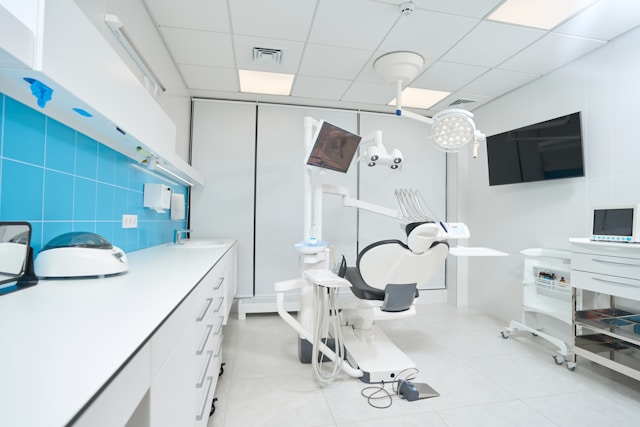What is medical transcription?
Medical transcription involves converting voice-recorded medical reports from doctors and other medical professionals into written documents. These reports form the foundation of clinical documentation and ensure accurate medical records. Medical transcriptionists play a vital role in capturing medical terminology, patient details, and treatment plans, making their work an essential part of healthcare operations.
While traditional medical transcription can be time-intensive, advancements like medical transcription software and speech recognition tools now streamline the process. These technologies reduce errors, save time, and boost efficiency in creating detailed, organized records.
Is medical transcription still in demand?
The demand for medical transcription is evolving with the rise of speech recognition software and electronic health record (EHR) systems. Although the U.S. Bureau of Labor Statistics (2024) predicts a 5% decline in medical transcriptionist employment from 2023 to 2033, the field remains relevant. Medical transcription companies continue to provide services where accuracy in documenting medical speech and terminology is critical, particularly in specialized healthcare sectors.
Medical transcription still holds value, especially when combined with cutting-edge tools like AI-driven transcription software, ensuring seamless clinical documentation and enhancing efficiency in healthcare settings.
The role of medical transcriptionists
Medical transcriptionists are vital in healthcare, ensuring accurate conversion of voice recordings into written text for official medical records. These records support patient care, legal proceedings, and insurance claims while streamlining the clinical documentation workflow.
Transcribing medical notes, including discharge summaries, transcriptionists create accessible and precise documents critical for continuity of care. Their specialized training in medical terminology and clinical documentation ensures error-free results.
With advancements like automatic speech recognition and speech-to-text tools, transcription services provide a perfect solution to enhance efficiency and cut costs while maintaining accuracy in patient care documentation. Certification as a Registered or Certified Healthcare Documentation Specialist (RHDS or CHDS) ensures transcriptionists meet industry standards.
These credentials allow them to produce accurate and detailed reports that include accurate medical terminology to meet EHR requirements accurately.
Traditional medical transcription services
Traditional medical transcription services involve trained professionals listening to recorded dictations from healthcare providers and manually typing out the text. This thorough process allows for human oversight, ensuring that nuances and context are appropriately captured.
Despite its thoroughness, this method is time-consuming and costly, involving significant human labor and resources. Additionally, the turnaround time for transcriptions can be lengthy, delaying the availability of updated patient records.
The shift toward AI-powered solutions
The advent of AI-powered voice transcription software has revolutionized the field of medical transcription. These advanced speech recognition technology systems use artificial intelligence and machine learning to instantly convert spoken language into written text. This technology significantly reduces the time required for documentation, allowing healthcare providers to access up-to-date patient records more quickly.
Benefits of AI-powered voice transcription software
AI-powered voice transcription software offers numerous advantages over traditional transcription methods, transforming how healthcare providers manage patient records and documentation. This technology leverages artificial intelligence to streamline workflows, enhance patient care, and reduce operational costs. Here are some key benefits of using AI-powered voice transcription software in healthcare:
Efficiency and speed
AI-powered transcription software significantly increases efficiency and speed by instantly converting spoken language into text. This rapid turnaround allows healthcare providers to quickly access updated patient records, improving the overall pace of clinical workflows. Automating transcription processes reduces the time spent on manual data entry, freeing up valuable time for healthcare professionals to focus on patient care.
Enhanced patient interaction
AI-powered transcription software enhances patient interaction by reducing healthcare providers' time spent documenting. Physicians can devote more time to patient consultations and care, improving patient satisfaction and health outcomes. The ability to capture detailed notes in real-time ensures that no critical information is missed, fostering more meaningful and accurate patient-provider communication.
Cost-effectiveness
Implementing AI-powered transcription software can lead to significant cost savings. Unlike traditional transcription services, which require hiring trained personnel, AI solutions minimize labor costs. The reduced need for manual data entry also decreases the likelihood of costly errors and rework. Over time, these savings can be substantial, making AI transcription an economically viable option for healthcare practices of all sizes.
Improved compliance
AI transcription software enhances healthcare compliance with regulatory standards, such as HIPAA, by securely handling and storing patient information. Automated systems reduce the risk of human error, ensuring that patient data is accurately recorded and maintained. Many AI solutions offer built-in audit trails and data encryption, safeguarding patient privacy and meeting stringent compliance requirements.
Challenges of AI-powered voice transcription software
While AI-powered voice transcription software offers numerous benefits, it also presents challenges that healthcare providers must navigate to ensure effective implementation. Addressing these challenges is crucial for maximizing the software's potential and maintaining high standards of patient care.
Formatting and proofreading needs
Despite the efficiency of AI-powered transcription, the output often requires thorough proofreading to ensure accuracy. Automated systems may misinterpret medical jargon, abbreviations, or homophones, leading to errors in the transcription. Healthcare providers must allocate time and resources for reviewing and correcting these inaccuracies to maintain the quality and reliability of patient records.
Training and implementation
Implementing AI-powered transcription software necessitates comprehensive training for healthcare staff. Familiarizing physicians, nurses, and administrative personnel with the new system can be time-consuming and may initially disrupt workflows. Effective training programs ensure all users can efficiently operate and integrate the software seamlessly into their daily routines.
Integration with existing systems
Another significant challenge is integrating AI transcription software with existing EHR and practice management systems. Compatibility issues can arise, causing delays and necessitating additional technical support. Ensuring seamless integration is critical to avoid data silos and maintain the continuity of patient information across different platforms.
Try Carepatron for medical transcription software needs
In AI-powered voice transcription, Carepatron is the premier choice for healthcare professionals. Carepatron offers healthcare professionals an advanced, user-friendly platform to streamline the demand for medical transcription processes and integrate seamlessly with existing healthcare workflows. Our AI medical transcription has high accuracy, an intuitive interface, and robust features, making it the top contender for medical transcription needs.
Carepatron goes beyond basic transcription, providing an all-in-one solution option for medical professionals. This includes a client portal, scheduling, telehealth capabilities, and award-winning customer support. This comprehensive approach ensures that healthcare providers can efficiently manage all aspects of their practice within a single platform.
Ready to revolutionize your medical transcriptionist process? Try Carepatron for free today and experience the future of medical transcription. Sign up now to enhance your practice's efficiency and focus more on patient care!
Reference
U.S. Bureau of Labor Statistics. (2024, August 29). Medical transcriptionists: Occupational outlook handbook. https://www.bls.gov/ooh/Healthcare/Medical-transcriptionists.htm




.jpg)




.jpg)




.jpg)

.jpg)
.jpg)
.jpg)
.jpg)

.jpg)


.jpg)


